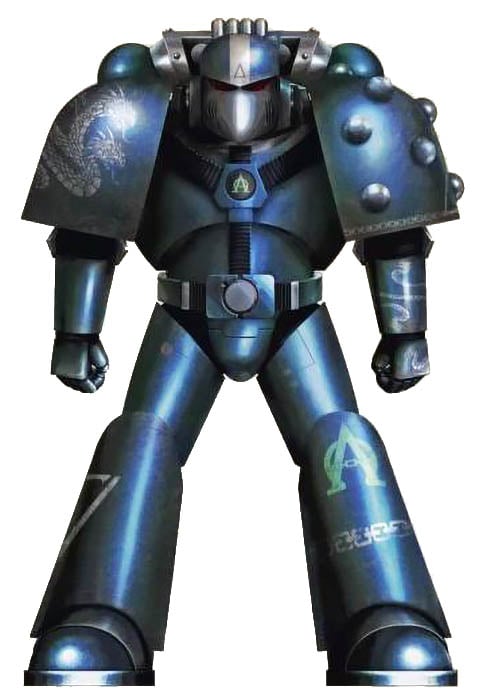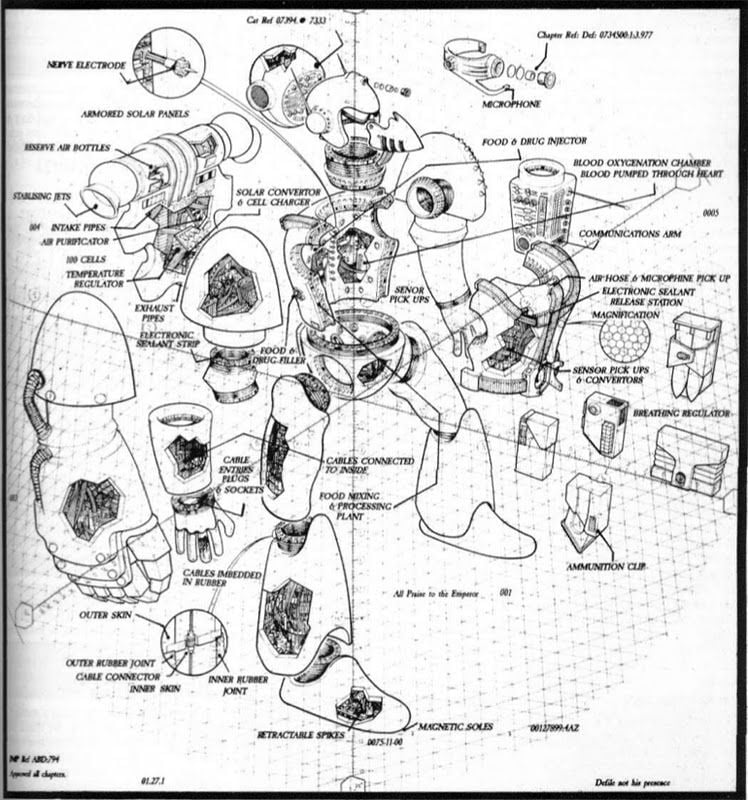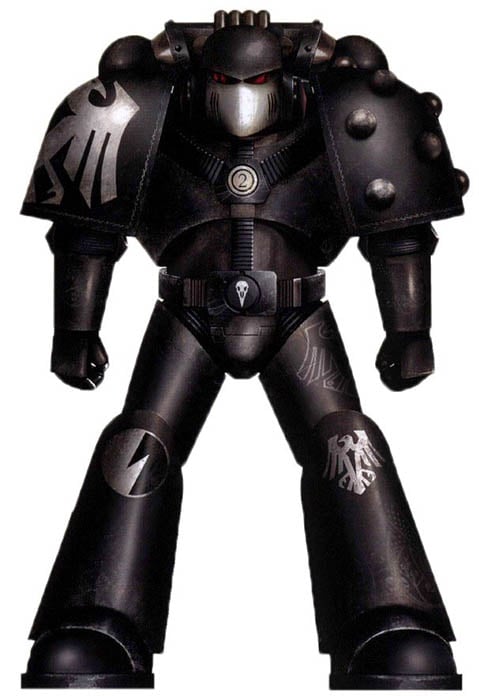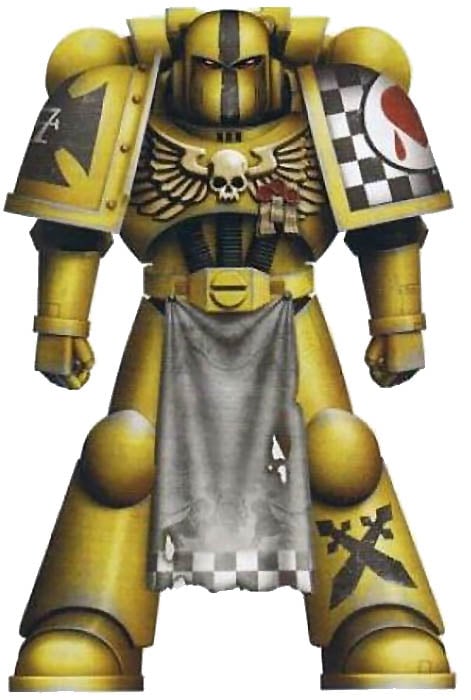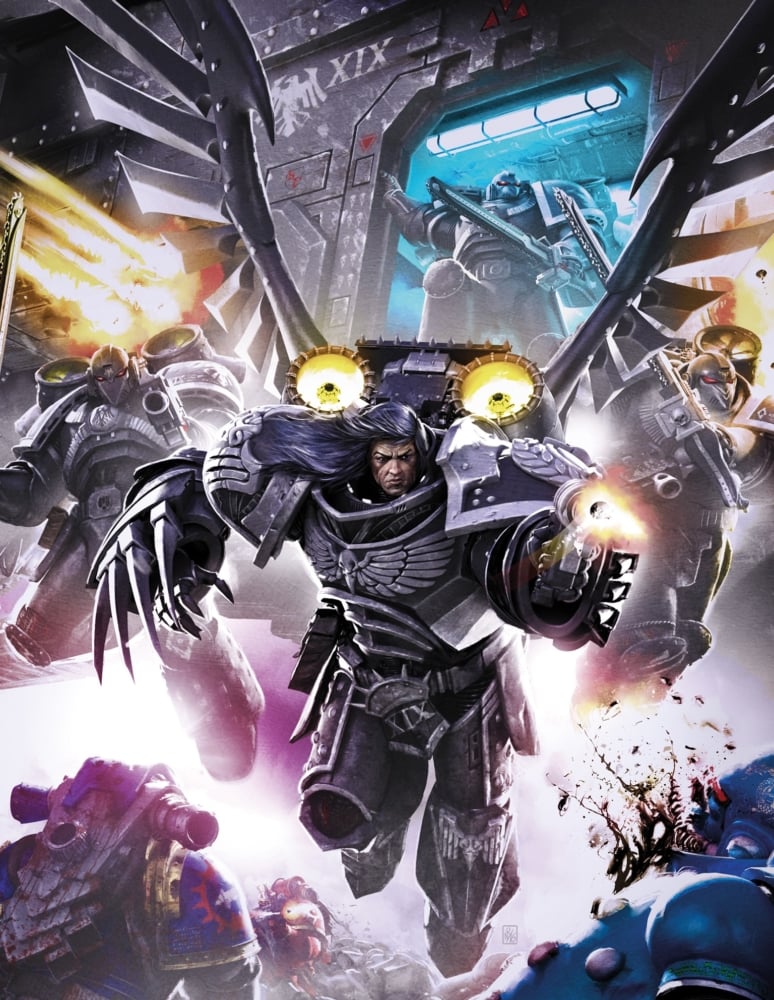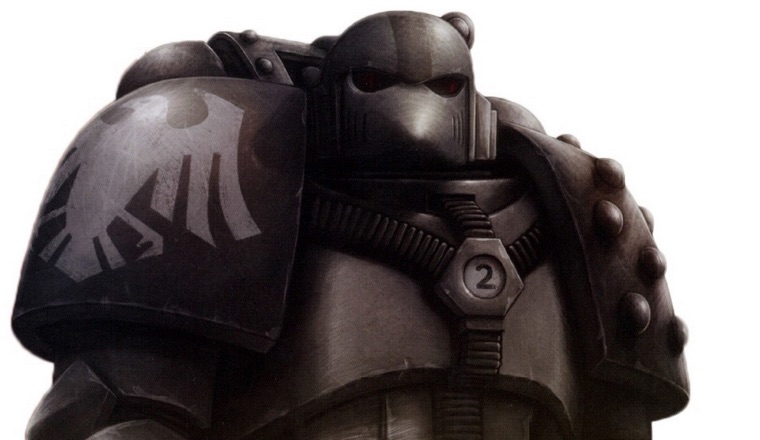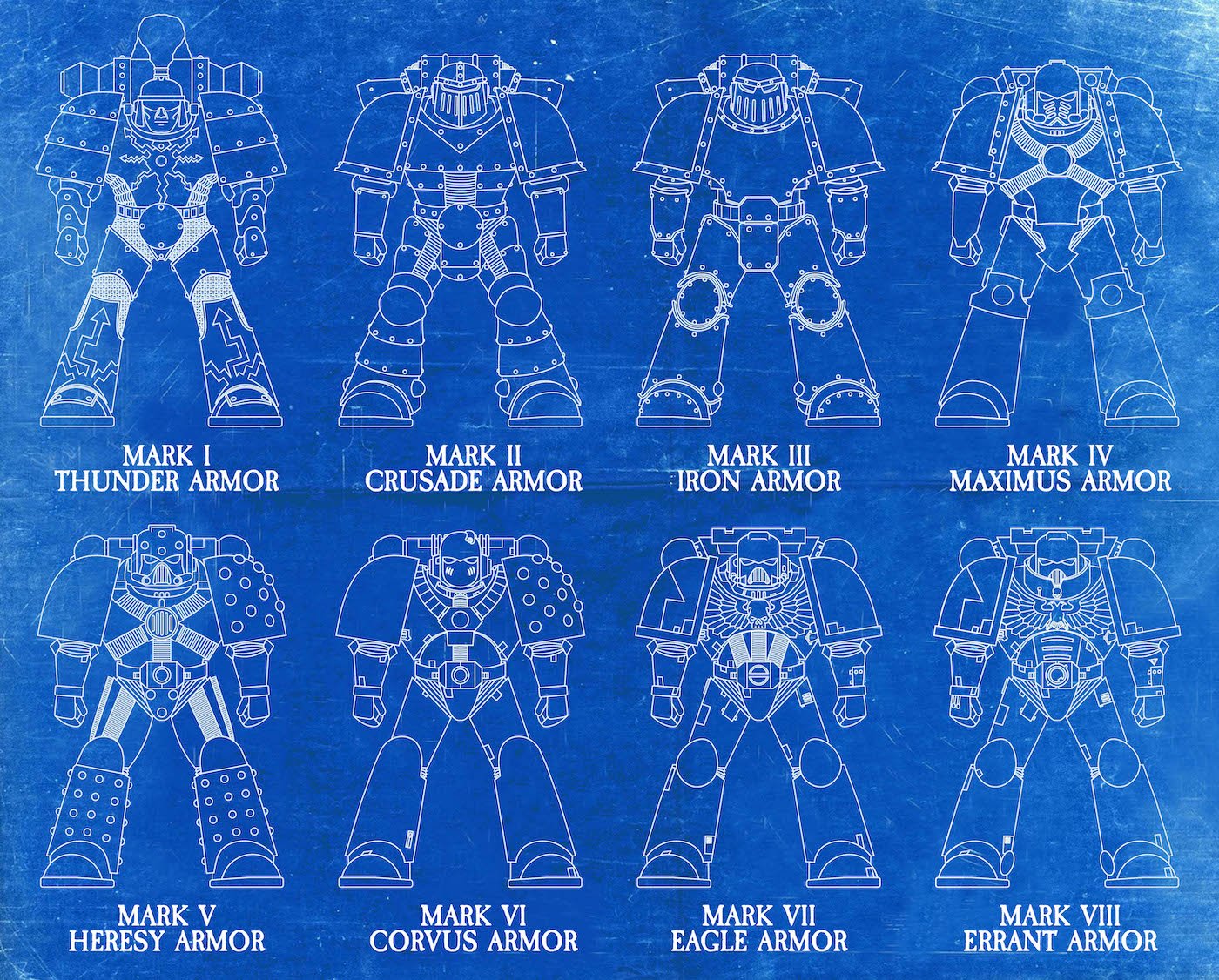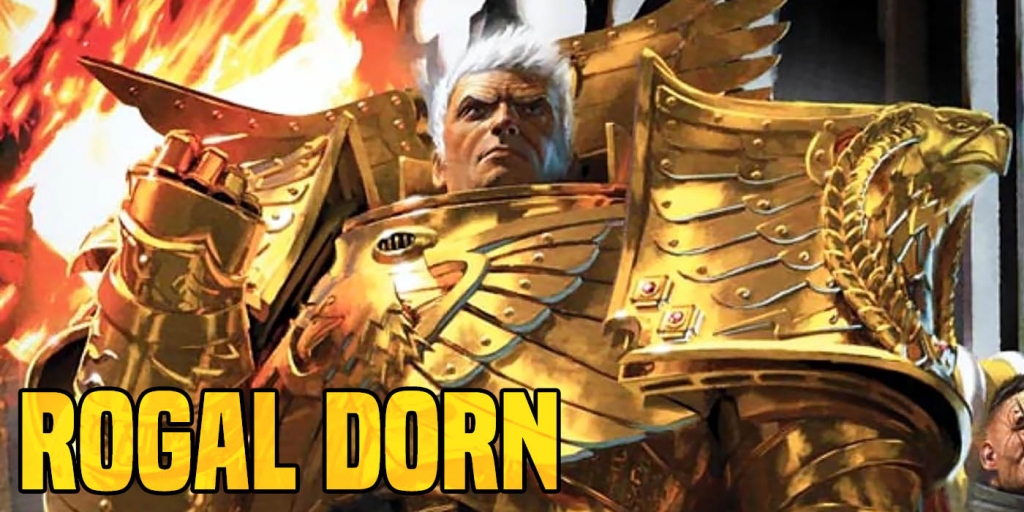Warhammer 40K: Mk.VI Corvus Armor – Beakies FTW!
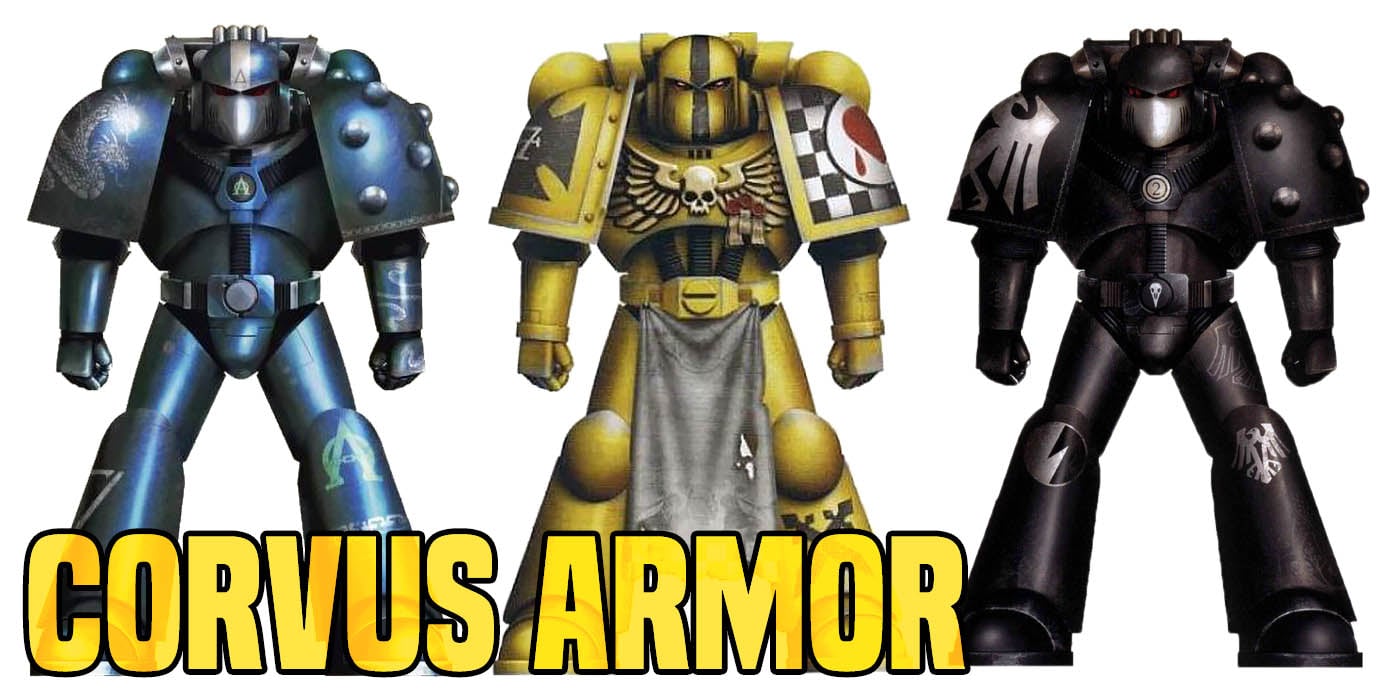
Today we step back 9000 years to before the Horus Heresy with a detailed look at Mk. VI Corvus Armor. Come forth tech adepts.
Power Armor Overview
Power armor is fully sealed, isolating the wearer from the outside environment and protecting him from gas weapons and harsh atmospheres. It also commonly includes numerous auxiliary systems such as communicators and auto-senses. The backpack contains the main power plant, environmental system, and additional stabilizers. Whilst power armor is most commonly associated with the Adeptus Astartes, the Sisters of Battle and many Inquisitors also use powered armor of one sort or another. Typically however these armors may not contain the same strength-enhancing properties or life-support functions of Space Marine power armor, nor do they provide the same amount of protection. All armor may further be augmented by various artifacts, relics, and enhancements such as pauldrons and greaves.
Power armor has been in use since before the Age of the Imperium, from the techno-barbarians of Earth to the original Space Marines created by the Emperor. Over the history of the Imperium, power armor has developed into many different forms. Need, circumstances, and recovery of new materials and technology have shaped the armor’s evolution.
Alpha Legion Mk.VI Power Armor
Space Marine Power Armor
Space Marine Power Armor is an extraordinarily sophisticated defensive system that combines huge resistance to physical damage with a sensory array and sealed environment which protects its wearer from the ravages of the void and alien atmospheres. Integrated with the armor are networks of electro-motivated fiber bundles which mimic and augment the muscular strength of the wearer. The true genius of the design, however, lies in its close integration with the already superhuman physiology, senses, and reflexes of the Space Marine within. Working in concert, armor and Astartes together become a weapon without equal.
Each suit of Space Marine Power Armor is a work of supreme artisanship, and although it may be one of many, each is a unique artifact whose spirit and history is of deep spiritual significance to both the Chapter to which it belongs and the Space Marine who wears it. It can take decades to complete just one of the new Mk VII power armor, so it is often easier to make a spare part for an existing suit than it is to make a completely new one.
There are numerous different Marks of Power Armor, most of which date back in terms of design and application many thousands of years ago to the time of the Great Crusade and the Horus Heresy. Each has its own lore and genesis in place and time. Even in the 41st Millennium, some intact suits from this near-mythical age survive in active service as war-relics of the Space Marines. Countless others have been produced or reacquired since, and different Chapters often have entirely different panoplies they can call upon to armor their forces. It is also far from uncommon for more recently fashioned armor to incorporate slivers or whole components from far older suits as revered connections to the past.
Space Marines go through an arduous process where they receive various implants culminating with the implantation of the Black Carapace, which allows the Marine a direct and instinctual interface with the armor, making it in effect a second skin. The advanced systems of Space Marine power armor also monitor the Marine’s biological functions, feeding the medical information to the Marine.
Power Armor Components
While Space Marine Armor has evolved and changed over the Millennia, key components remain the same.
- Auto-senses: Contained in the helmet, these systems include thought-activated communication arrays and audio filters, targeting reticules and range finders, tactical displays, and auspex-links, and a host of other features.
- Photolenses: Protect the Space Marine from light bursts and allow him to see in the infrared and ultraviolet spectrum’s as well as enable vision in low-light conditions.
- Respirator Vox Grill: This thought-activated device amplifies a Marine’s battlecry to deafening volumes and contains a respirator to filter out toxins and draw upon an internal oxygen supply.
- Auto Responsive Shoulder Plates: Shaped to deflect and absorb incoming blows, they usually display heraldry including Chapter, Company, and Squad symbols.
- Chestpiece: Designed to protect armored power cables.
- Backpack Power Unit: This houses the primary power core for the armor, as well as reserve cells and an emergency solar collector.
- Life Signs Monitor: Regulate a suite of life support functions, including an injection system that can regulate painkillers, anti-toxins, and combat stimulants.
- Nutrient Reservoir: A self-replenishing high-energy food store that can sustain a Space Marine’s metabolism. Thus during battle, there is no need for a Space Marine to eat or drink.
- Reinforced Greaves: These incorporate gyroscopic stabilizers and power units that can magnetize the soles of the armor’s boots, allowing Space Marines to walk on metal surfaces in the void of space or zero gravity environments.
Mark VI “Corvus Suit”
At the end of the production of Mark IV armor, a long-term research project began to replace it. As this remained a theoretical endeavor for some time, it lead to the production of the Corvus Suit as a stopgap measure, using a mixture of new and old features.
The Mark VI prototype design (which bore the provisional designation of Mk V at the time) was field-tested during the Scalland Campaign by Legionaries of the Raven Guard, whose experiences and comments resulted in improved design features in the finalized armor mark. Mark VI armor offered no better protection levels than the Mark IV, but incorporated more efficient internal systems where power routing and auto-sense were concerned. Power systems were given backup redundancies with no increase in weight, while both olfactory and auditory sensors were improved.
Additionally, the armor featured the best stealth capabilities of all power armor marks so far designed, as well as a new method of compartmentalizing components that allowed them to be swapped out with pieces from previous marks with ease. It is the lightest variant of power armor and featured dual technology circuits that allowed the replacement of rare or sophisticated parts with common or basic alternatives. It also included fail-safes such as duplicate power cabling. It also distinctive for its conical nose – designed to house additional systems including advanced auto-senses. The studded left shoulder pad, taken from the previous MkV pattern, commemorates the glory of those heroes who stood at the Eternity Gate alongside the Emperor himself.
The finalized armor mark was named Corvus Armour in honor of Corvus Corax, Primarch of the Raven Guard. The first sets of it shipped to the Raven Guard Legion ahead of all other loyalist legions, in recognition not only of their role in the design process but of the sacrifices made by the Raven Guard in the Drop Site Massacre and their determinaton to rebuild and rejoin the fight against Horus the Great Betrayer.
The Mark VI features clean, sleek lines, due to the routing of power cables under the exterior armor plate (abdominal covering of these was one of the suggestions made by the Raven Guard) and the increased sloping of the helmet design. The left shoulder armor features the tell-tale molecular bonding studs of Mark V armor. The initial suits did indeed use the ablative technique pioneered in Mark V suits, as the paucity of supplies during the Heresy meant that some sacrifices still had to be made, even with a new armor design. In later years, the left shoulder was armored to the same level as the right, but the studs were still affixed in a deliberate continuation of the honored design that had won the Horus Heresy for the Imperials.
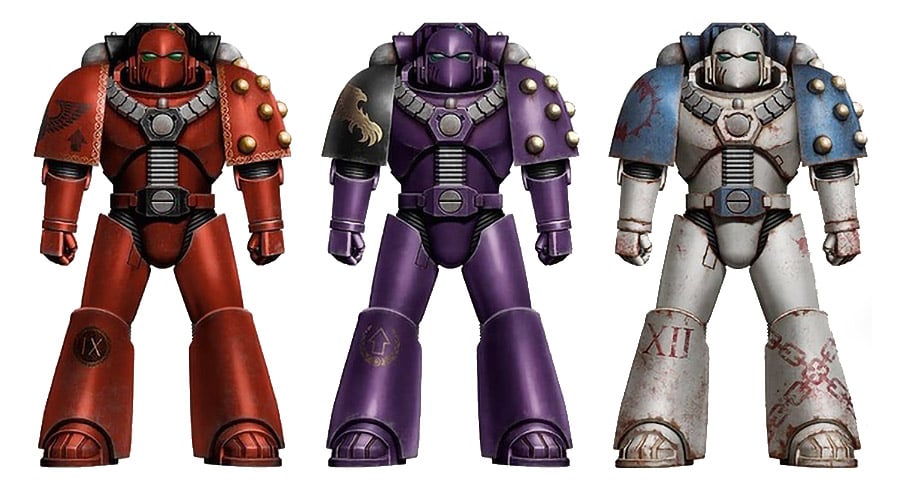 Heresy-Era Blood Angels, Emperor’s Children, World Eaters Mk.VI Power Armor
Heresy-Era Blood Angels, Emperor’s Children, World Eaters Mk.VI Power Armor
The Alpha Legion was able to acquire small numbers of Corvus Armour and modified it according to their Legion’s own needs. Built in secret, the “Corvus-Alpha” pattern of Corvus Armour saw use openly during the Horus Heresy.
Chaos Space Marines can be seen in this armor despite its association with Imperial Space Marines; they captured a significant quantity of the suits on Mars during the Heresy, as well as Mechanicum production facilities, and were, therefore, able to produce their own Mark VI suits.
Modern Mk.VI Corvus Armor Usage
The Raven Guard have an affinity for Mk.VI Corvus armor, and have gone so far as to occasionally integrate its distinctive helmet design into the modern Mk.X Tacticus Armor, used by their Primaris Marines. Chapter Master Kayvaan Shrike‘s customized armor is a notable example.
Space Marine Power Armor Marks
Which mark of power armor is your favorite?

